| Tweet | Follow @OphirGottlieb |  |  |

BABA is trading $102.25, up 3.7% with IV30™ up 2.9%. The Symbol Summary is included below.
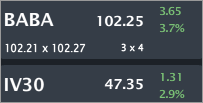
Provided by Livevol
Conclusion
BABA has earnings due out tomorrow before the bell. It hasn't traded as a public company for very long, so this is the first look at an earnings release. We'll look at the risk as reflected by the option market, and mostly, we'll look at the financial measures that drive the company.
But... and I say this with no bias either way... Either you believe what BABA is reporting in their financials and see a firm different than any other on the planet Earth (which is possible given China's faux capitalism faux nationalized economy), or you believe this company is just lying.

How is BABA so different?... Well, let's start with this.
Are AMZN and BABA even in the same peer group?
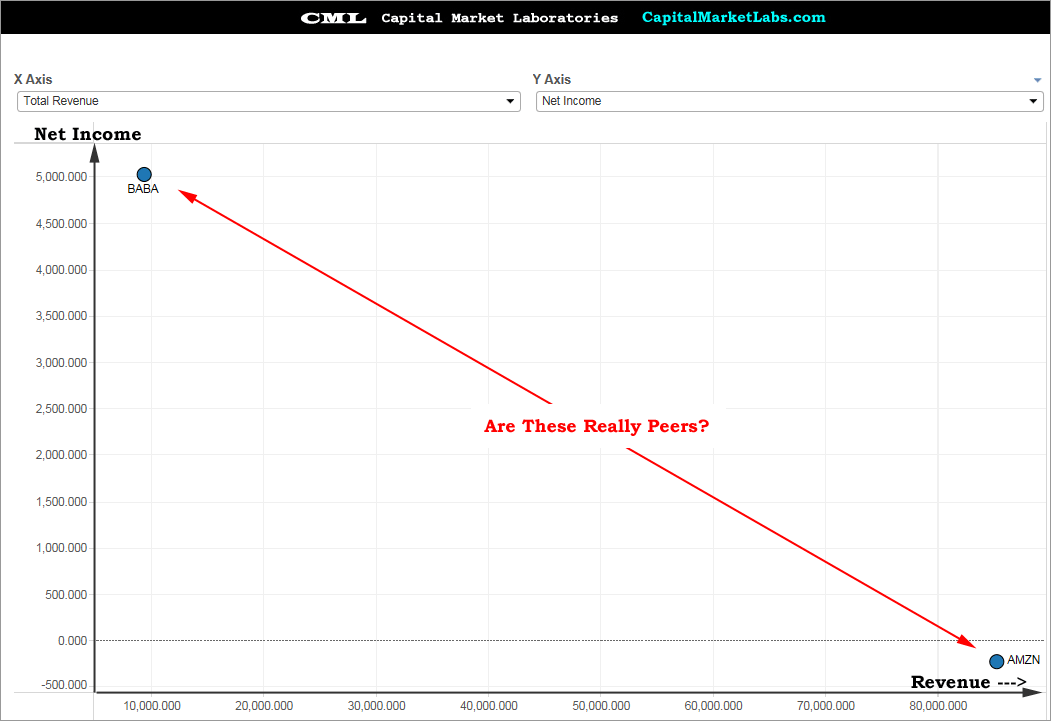
Provided by Capital Market Laboratories
How different is BABA (chart #2)?
Total Assets vs. Net Income Margin % vs. Peers
On the x-axis we have total assets. On the y-axis we have net income margin % (aka earnings margin %). Whether we look at smaller firms, medium sized firms or gigantic firms, BABA's margins are ridiculously high.
The firm has reported a 54% net income margin %, which in English means:
Revenue: $9.2B
Net Income: $5B
In comparison, as we can see it the chart, here are some other peers:
BIDU: 31%
FB: 24%
GOOGL: 19%
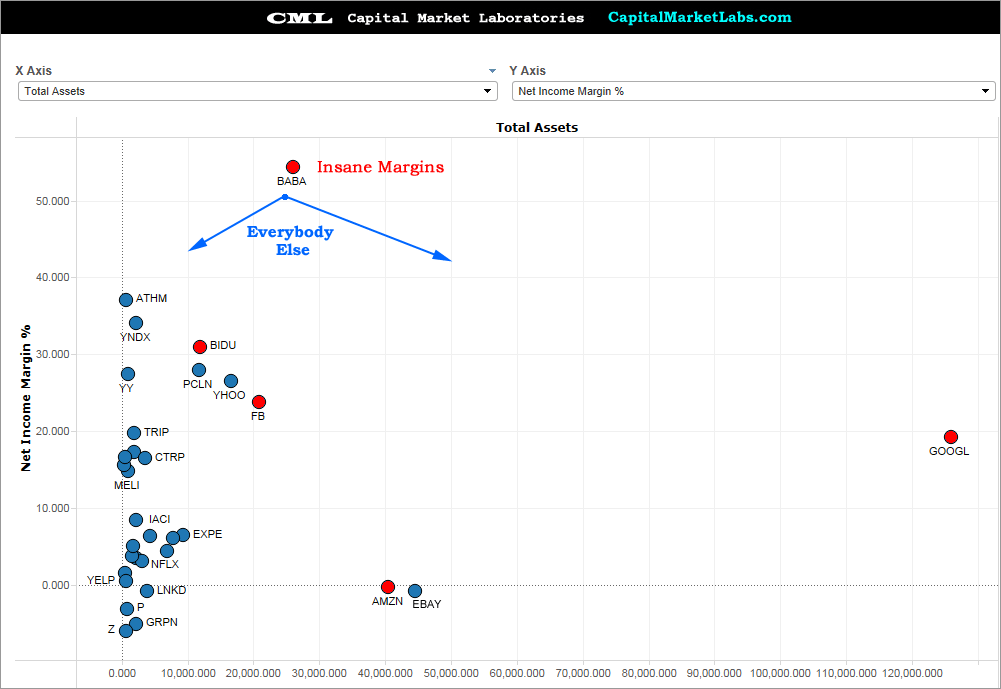
Provided by Capital Market Laboratories
Alright, let's take a step back and focus just on BABA for two charts.
Revenue (TTM)
BABA has generated $9.2B in revenue in the trailing-twelve-months (TTM), up from $8.1B just two quarters ago. So, yes, the business is growing rather rapidly for a firm this size.
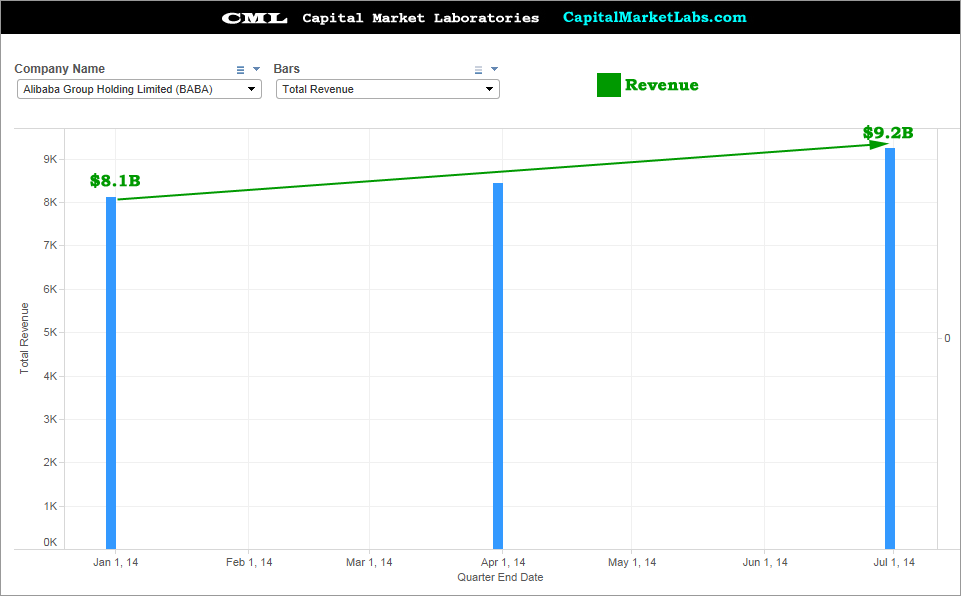
Provided by Capital Market Laboratories
---> Make These Visualizations Yourself: Free Trial
Revenue (TTM) vs Net Income (TTM)
I've added net income (aka earnings) as a red line on top of the revenue. We can see that rapid expansion in the quarter just before the IPO. Eh, hem...
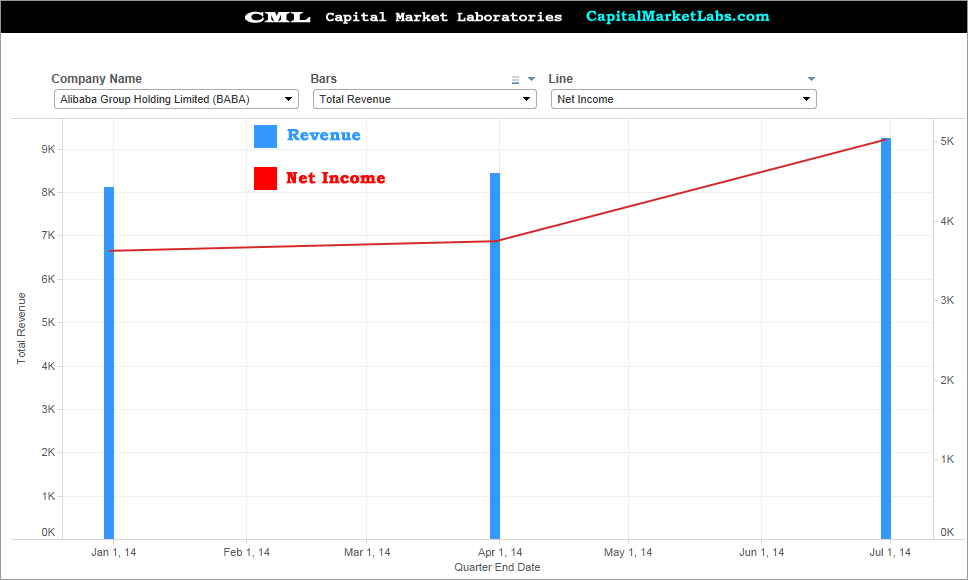
Provided by Capital Market Laboratories
Now let's do one more peer comparison...
Gross Margin % vs. Net Income Margin % vs. Peers
We know that BABA has the highest net income margin % from the very first chart... and of course, we see that again here. But, BABA's gross margin % is actually lower than FB and PCLN (totally... totally, different businesses, of course).
The real comparison is to AMZN, BIDU (sort of) and GOOGL (sort of). Relative to those three peers, we can see BABA's gross margin % is huge.
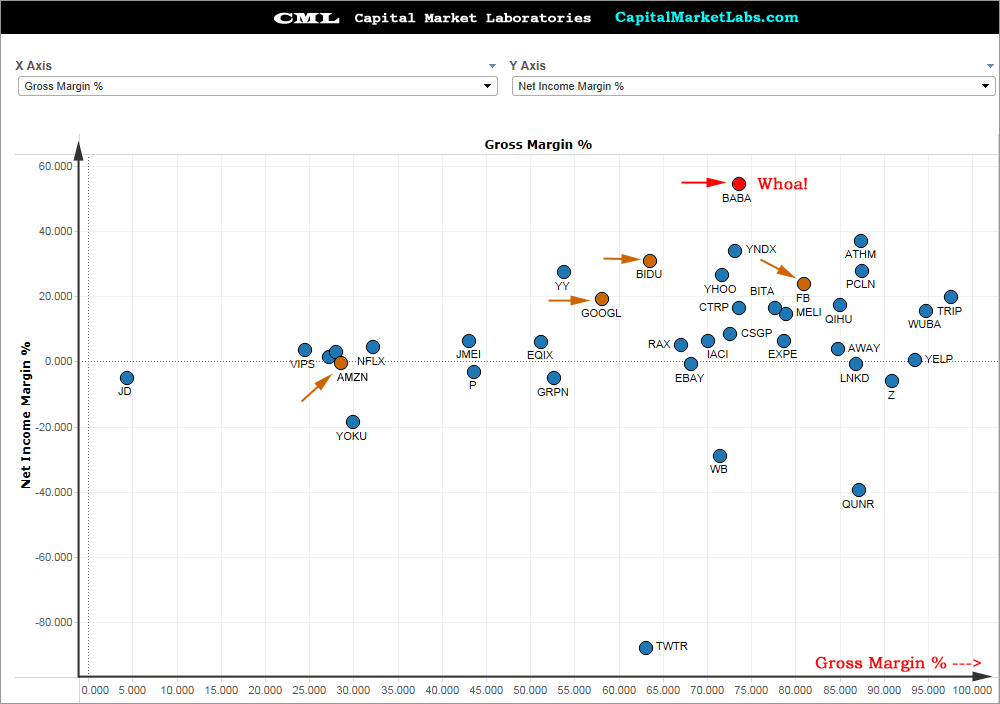
Provided by Capital Market Laboratories
I like the second chart so much, I'll include it again...
Total Assets vs. Net Income Margin % vs. Peers
There's BABA... and then there's everybody else.

Provided by Capital Market Laboratories
OK, let's turn to risk pricing in to earnings and the IV30™ chart in isolation, below.
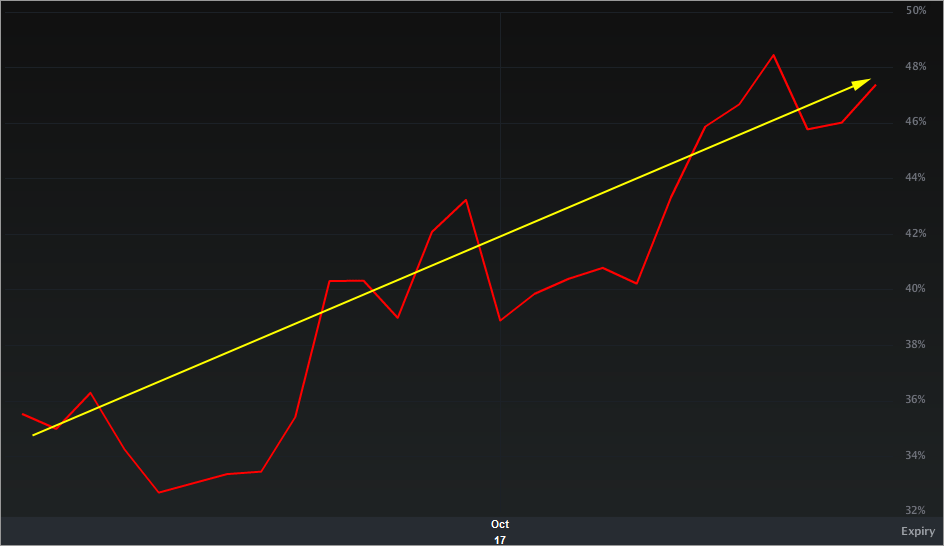
Provided by Livevol
The implied volatility is the forward looking risk in the equity price as reflected by the option market (IV30™ looks forward exactly 30 calendar days).
In English, the red curve is the risk in future stock price movement. This company hasn't been trading very long, so all we can see is that the risk as reflected by the option market is right about at an all-time high. That's normal, expected and I believe correct. As far as the absolute level of the vol, I have no idea... Nothing to compare it to really.
I believe (this is my opinion, no facts) BABA will release earnings numbers that are smoothed, not necessarily false but not really totally transparently true, and will avoid big surprises unless its good news for the first few earnings cycles.
Finally, the Options Tab is included below.
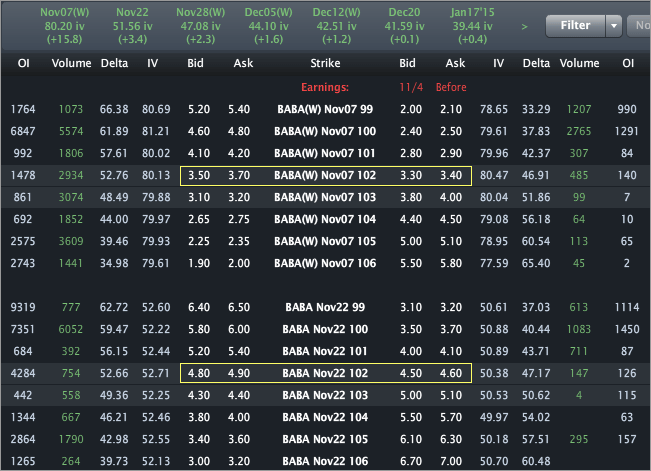
Provided by Livevol
Using the at-the-money (ATM) straddle we can see that the option market reflects a price range of [$95, $109] by the end of trading on Nov 7th.
Using the options that expire on Nov 21st, that range is [$92.50, $111.50].
- If you believe the stock will be outside that range on expiry or any date before then, then you think the volatility is too low.
- If you believe that range is too wide, and that the stock will definitively be in that range on expiration, then you think volatility is too high.
- If you're not sure, and can make an argument for either case, then you think volatility is priced just about right.
This is trade analysis, not a recommendation.
Follow @OphirGottlieb
Tweet
Legal Stuff:
Options involve risk. Prior to buying or selling an option, an investor must receive a copy of Characteristics and Risks of Standardized Options. Investors need a broker to trade options, and must meet suitability requirements.
The information contained on this site is provided for general informational purposes, as a convenience to the readers. The materials are not a substitute for obtaining professional advice from a qualified person, firm or corporation. Consult the appropriate professional advisor for more complete and current information. I am not engaged in rendering any legal or professional services by placing these general informational materials on this website.
I specifically disclaim any liability, whether based in contract, tort, strict liability or otherwise, for any direct, indirect, incidental, consequential, or special damages arising out of or in any way connected with access to or use of the site, even if I have been advised of the possibility of such damages, including liability in connection with mistakes or omissions in, or delays in transmission of, information to or from the user, interruptions in telecommunications connections to the site or viruses.
I make no representations or warranties about the accuracy or completeness of the information contained on this website. Any links provided to other server sites are offered as a matter of convenience and in no way are meant to imply that I endorse, sponsor, promote or am affiliated with the owners of or participants in those sites, or endorse any information contained on those sites, unless expressly stated.


No comments:
Post a Comment